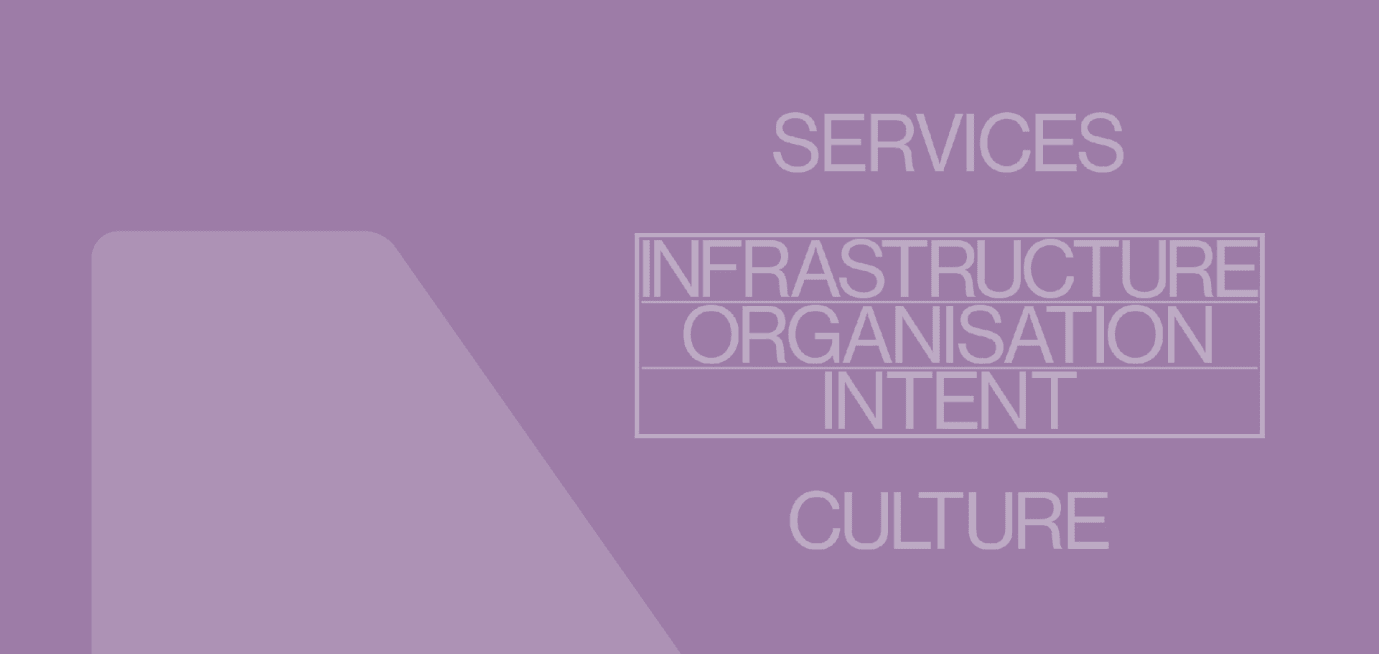Full Stack Service Design is a model created by the designer Sarah Drummond which helps to identify a service’s components and how these affect its design. What is her proposed method? To break the service down, which helps understand how each one of its parts influences the user’s experience.
According to the author, services are made up of thousands of small design decisions, which are very often accidental. These decisions are usually taken unconsciously, isolated from one another, and without understanding the impact that they have on the services or on the experience that users will take away from these services. To Drummond, just as a product designer must understand the materials and fabrication processes that he or she works with, this model helps those who need to develop and implement innovation processes navigate through the physical and invisible materials that make up services.
Full Stack Service Design formulates that services are made up of a series of layers, which go from the superficial layer that the user can see –the service in itself– to the infrastructure over which the service is embedded in, the organisation that manages this infrastructure, the intention that impulses this organisation, and finally, the culture that leads to the creation and governs this initial intention.
A good metaphor for understanding why it’s important to identify each layer’s depth is theatre. In a play, there’s what’s onstage, which is visible to the audience, and what is backstage, which is out of sight, yet fundamental for everything to happen. A service is the story and the characters that can be seen. And in order to generate it, all the complexity that exists behind that scene must be designed.
As we delve deeper into these layers, we will see how each one of them has an effect over the one that follows.
- The service. It’s what users see and what they interact with. It consists of the user’s experience and the business processes that allow for value to be generated.
- The infrastructure. It’s what allows for the services to be rendered. It affects the way in which we build our services, because these depend on the technology used to render them and maintain them over time.
- The organisation. How we organise ourselves in order to make decisions. This affects how we build our services, since the way in which they are structured may allow or impede decision-making.
- The intention. The reason why we render services. The things we want to achieve as an organisation prompts the creation of services. It may be common for organisations to forget what this intention is or for them not to know how to carry it out in the real world.
- The culture. The conditions that affect our way of making decisions. It involves every layer that makes up the services, since it configures the way in which we make decisions and act as individuals and collective entities. It determines how we design and render services, basing ourselves on our morals and shared beliefs.
“What’s interesting is that the model proposes taking a look at the organisation; understanding how people relate to each other, understanding the culture. This is really important, since often when we work in managing changes and service design, we tend to look at our project’s contents, when the important thing is to look at the roots. The structure, the culture, and the intention are what sustains businesses and institutions and, therefore, what lends long-term sustainability to any project,” says Javiera Godoy, service designer and a member of the Unit team.
This model is also useful for people in leadership positions at businesses and institutions, since it takes into account that organisations are complex systems and breaks down every layer that must be analysed and contemplated in order to implement innovation processes.
“It helps executives identify what their gaps are, and to see things that aren’t obvious,” assures Katalina Papic, partner and Managing Director at Unit. ”Being able to observe the complexity lets you know where work must be done in order to generate change.”
To Bianca Benvenuto, service designer and part of the Unit team, Full Stack Service Design is clarifying since it elucidates that service design usually starts from a brownfield, which means that it entails limitations related to the current state of the organisations or services that it intends to change. “When you work in a brownfield environment, you must design thinking of how a system’s constitutive components –norms, policies, culture, infrastructure, or design– have repercussions on the user’s experience, and how they help or fail to satisfy his or her needs and/or desired results,” she says. “The text proposes that one must first understand the organisations, understand its culture, its behaviour, its intentions, but that the role of service design –and of designers– has to do with co-designing with the people who form part of the organisations. Incorporating teams into the process is very revealing. Service design is carried out with them; we don’t do it on our own.”
Review the complete model at: sarah-drummond.com/full-stack-service-design.
About Sarah Drummond
Sarah Drummond is a leader in design who specialises in services and strategic design centred on a balance between people’s needs and the planet’s needs. She co-founded Snook, a recognized design studio, and directed the company as a Managing Director for over 12 years. She is currently the director of The School of Good Services.
Sarah received an honorary PhD from the Glasgow School of Art for her services rendered to design in 2019. She was awarded a scholarship from Google for her work in technology and democratic innovation, and was named one Good magazine’s 100 extraordinary people who address global problems in a creative way for CycleHack, an initiative that has the objective of reducing impediments for cycling.
Twitter: @rufflemuffin / sarah-drummond.com / Company: good.services
